
05 Apr TIO NYC: Hanging With Richard & Lauren & Dale &….
At the nexus of painting and photography is – artist Richard Estes.
A show of Estes’ work from the early years to the present is on display at MAD, (Museum of Arts & Design), 2 Columbus Circle. It is the very first exhibition at the Museum devoted to a single painter,
About the Exhibition (through September 20):
Spanning from the mid-1960s to the present, Richard Estes: Painting New York City presents works by this quintessential New York artist and enduring leader of the Photorealist movement. Providing an unprecedented insight into the artist’s creative proces, the exhibition reveals a full range of Estes’ paintings and works on paper, including his photographs, silkscreens and woodcuts and their various proofs, states, and art-making tools.
Here’s what the New York Times reporter Ken Johnson had to say about the no-miss show:
Painting used to be as much a craft as an art. That began to change in the late 19th and early 20th centuries as artists like van Gogh, Picasso and countless others shifted the focus from technical virtuosity to the expression of individual sensibility and intellect. Bravura skills with the brush, like those of Bouguereau and other academicians, became anathema for the early Modernists.
Prejudice against craft persisted into the late 1960s, when there came a resurgence in realism, a way of painting that seemed to require considerable know-how if not traditional expertise to be done well. A subtrend was photorealism, which was practiced most compellingly by Robert Bechtle, Chuck Close and Richard Estes, who is the subject of an interesting but problematically organized exhibition at the Museum of Arts and Design.
“Richard Estes: Painting New York City” is Mr. Estes’s first solo exhibition in a New York museum, and it’s the first exhibition devoted to a single painter at the Museum of Arts and Design. The core of the show, organized by the guest curator Patterson Sims, is a selection of 24 paintings of urban subjects like glass and chrome storefronts, movie theater marquees, cars and trucks, subways, the Brooklyn Bridge, views from the Staten Island Ferry and idyllic images of Central Park made between 1965 and 2015. As if some further justification for exhibiting paintings at this museum was needed, the show also includes didactic sections about the technique that goes into Mr. Estes painting and prints. Disappointingly, this aspect of the show doesn’t fully deliver what it promises. But the paintings are riveting to behold.
Born in Chicago in 1932, Mr. Estes moved to New York in 1958. He’s lived here ever since, and most of his paintings have been of New York scenes. Based on his own photographs, which he cuts up and pieces together to create his compositions, they picture complex scenes in eye-dazzling sharp focus and in extreme detail. Viewed up close, the seamless illusions fall apart into myriad patches of colored paint; the magic partly is in how your eyes and mind flip between seeing the realism and seeing the abstraction…
Mannequins. We pass them in store windows, but generally just clock the threads hanging off their lithe forms. But mannequins can be more than clothes hangers. In the hands of a modern-day Galatea such as Ralph Pucci, they can reflect the zeitgeist as much as the clothes on their sculpted backs.
Don’t miss “Ralph Pucci: The Art of the Mannequin on the second floor at MAD (through August 30):
About the Exhibition:
Ralph Pucci: The Art of the Mannequin is the first museum exhibition to explore the work of renowned New York-based designer Ralph Pucci, widely regarded for his innovative approach to the familiar form of the mannequin. Having collaborated with luminaries such as Diane von Furstenberg, Patrick Naggar, Andrée Putman, Kenny Scharf, Anna Sui, Isabel and Ruben Toledo and Christy Turlington, Pucci’s mannequins not only expand the parameters of this ubiquitous sculptural form, but reflect major cultural trends of the past three decades.
As Pucci was building his business in the 1970s, the notion of the “super model”—the living mannequin with a personality—emerged. Pucci captured this catalytic moment in his work, finding inspiration from sources as varied as Greek and Roman statues and the performance costumes of the New York Dolls. Pucci personified the previously anonymous form in new and challenging ways, creating visions of physical beauty that were more specific, empowered, and diverse than the fashion industry had previously allowed. More than commercial armatures or sculptural forms, his mannequins became agents of change in our attitudes to the body, to fashion, and to individual identity.
The Art of the Mannequin includes over 30 of Pucci’s most important mannequins, as well as an in-gallery recreation of his sculpture studio. Pucci’s master sculptor and longtime collaborator, Michael Evert, will be in residence during the exhibition’s run to give visitors a first-hand look at the creative process, from initial modeling in clay to the rendering of the fiberglass end-product. In conjunction with the installation of mannequins the renowned designers Isabel and Ruben Toledo will curate a selection of jewelry from MAD’s collection which will be installed on Ruben’s famous surrealist jewelry mannequins.
Lunch atop MAD at Robert with its breath-taking views of Central Park, Columbus Circle and Broadway may be one of the best kept secrets in town. It’s service with an authentic smile and an imaginative farm-to-table menu with colorful platings.
(Brunch, lunch and dinner. Reserve a window table).
Dale Chihuly at Marlborough Gallery, 57 Street:
Dale Chihuly is predominantly known for his complex, organic glass sculptures and shapes.
Born in 1941 in Tacoma, Washington, Chihuly was introduced to glass while studying interior design at the University of Washington. After graduating in 1965, he enrolled in the first glass program in the country at the University of Wisconsin, and he later established the glass program at the Rhode Island School of Design and taught there for over a decade.
Throughout his long and storied career, Chihuly has defied categorization and pushed creative boundaries. Credited with restoring vitality to a craft that began centuries ago in Venice, he took glassblowing to new heights.
Chihuly’s interest in printmaking began over 15 years ago. His enjoyment in the spontaneous act of drawing has led to his continued pursuit of original printmaking, and like his drawings, the prints offer an intimate and alternative connection to his work in glass.
Chihuly’s works are on display internationally and are in the collections of close to 200 museums worldwide, including: Brooklyn Museum, Brooklyn, New York; Carnegie Museum of Art, Pittsburgh, Pennsylvania; Cooper-Hewitt, National Design Museum, Smithsonian Institution, New York; Corcoran Gallery of Art, Washington, D.C.; Israel Museum, Jerusalem, Israel; Los Angeles County Museum of Art, Los Angeles, California; Metropolitan Museum of Art, New York; Victoria and Albert Museum, London, United Kingdom; Singapore Art Museum, Singapore.
Chilhuly talks about his new work here:
Lauren Bacall, Yves St. Laurant & Halston at the Fashion Institute of Technology:
At the funeral for her husband, Humphrey Bogart, Lauren Bacall famously put a whistle in his coffin. That was a reference to the famous line she spoke as Marie “Slim” Browning in their first film together “To Have and Have Not” (1944): “You know how to whistle, don’t you? You just put your lips together and blow.”
Lauren Bacall: The Look is the first exhibition to exclusively celebrate “Slim,” the world-famous model, star of stage and screen, and fashion icon and muse to the industry giants such as Yves St. Laurent.
According to the Museum’s website:
Bacall’s own garments take the spotlight in this exhibition, which also explores Bacall’s personal relationships with several of the fashion designers who dressed her. Organized by graduate students in an MA program, this exhibition examines Bacall’s distinctive style within the context of her modeling, film, and theater careers.
Selections from Bacall’s personal wardrobe, as well as from her film and stage roles, are displayed alongside photographs, magazine pieces, film posters, and archival footage. Approximately one dozen garments have been selected from a collection of 700 that Bacall donated to the museum between 1968 and 1986. Lauren Bacall: The Look includes work by designers Marc Bohan, Pierre Cardin, Norman Norell, Yves Saint Laurent, and Emanuel Ungaro, focusing on pieces from the 1960s and 1970s.
And while we are on the subject of the 1970s…
Picking up where the 1960s left off, the Seventies was a tumultuous decade. Women, African Americans, Native Americans, gays and other repressed and fringe groups continued to fight for equality, while many Americans joined protests against the ongoing war in Vietnam. Then there was the flip side of the decade: A “New Right” mobilized in defense of political conservatism and traditional family roles, and “Tricky Dick” Nixon undermined many people’s faith in the good intentions of the federal government. By the end of the decade, those divisions and disappointments had set a tone for public life many would argue is still with us today.
But on the lighter and much brighter side, fashion of the 1970s was fun, if not revolutionary. Think polyester, bell bottoms, leisure suit, track suits, cowl neck sweaters, tunics, culottes, skin-tight T-shirts, akin-tight everything, flowered pattern dress shirts, medallions.
And the 1970s was probably the first full decade in which women could be seen wearing pants in the family– and in the office.
And that was thanks to Yves St. Laurant, one of two leading designers of the decade.
The other was Halston.
Yves Saint Laurent + Halston: Fashioning the 70s is another worthwhile stop at FIT.
According to the Fashion Institute’s website:
Yves Saint Laurent + Halston: Fashioning the ’70s celebrates the two designers who defined the sexy and glamorous fashions of the 1970s. This is the first exhibition to juxtapose their work and analyze the way they dealt with similar themes and aesthetics during the height of their careers. Both designers are equally represented by the approximately 80 ensembles and 20 accessories that are arranged thematically in an environment designed to evoke the style of this singular, dynamic era in history.
Drawn exclusively from the holdings of The Museum at FIT, the exhibition offers a unique perspective on two of the best-known fashion designers in modern history. The museum’s collections hold the Halston archives—the most comprehensive records of his work in the world—as well as a vast array of significant Yves Saint Laurent pieces donated by important clients, fashion editors, friends, and colleagues of Saint Laurent. These include Lauren Bacall, Marina Schiano, Aimée de Heeren, Mary Russell, and Tina Chow. It is worth noting that the first major retrospective exhibition on Halston was organized at the museum in 1991 by the late curator Richard Martin….
A third show at FIT, Faking It: Originals, Copies, and Counterfeits, investigates the history of both authorized and unauthorized copying, as well as the various factors that have led to grey areas in authenticity.


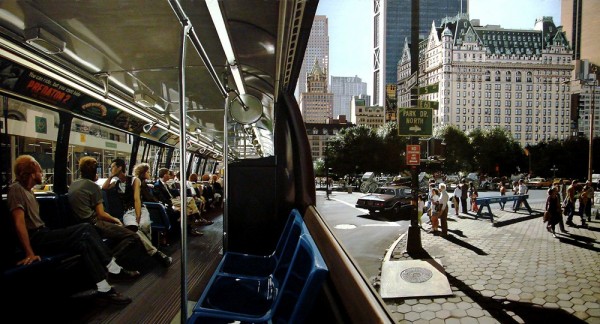
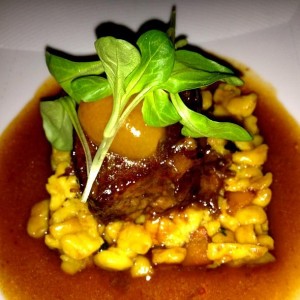
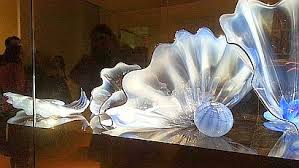

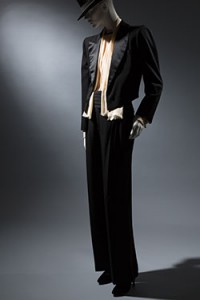
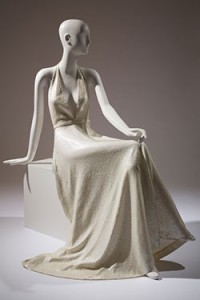
Sorry, the comment form is closed at this time.